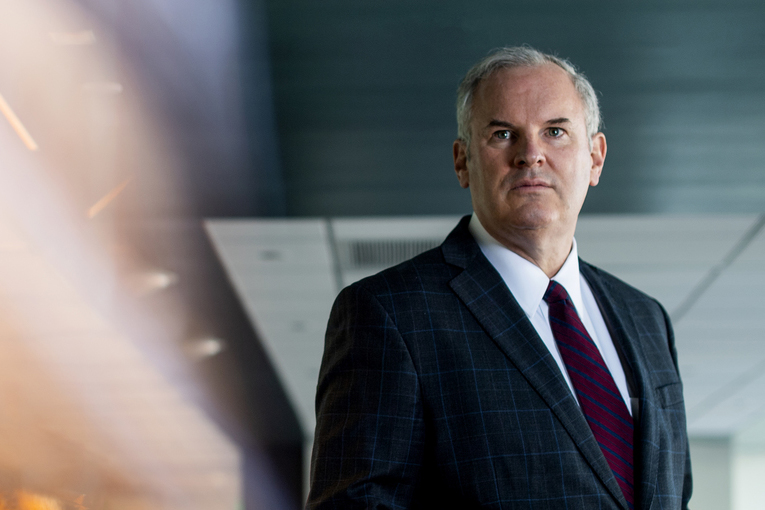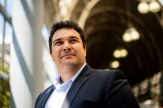Can the destructive Bootleg fire teach us to prevent wildfires before they start?

As the Bootleg fire in southern Oregon continues its destructive growth practically unabated, it threatens homes and critical infrastructure—threats that will only grow more dire as climate change dries out large swaths of the country and people increasingly move out of urban centers and into woodland areas, say two Northeastern professors who study climate science and resilience.
The fire, which began on July 6 near Bootleg Spring in Klamath County, Oregon, quickly grew out of control and has consumed more than 220,000 acres in the last week. As of July 15, it was the largest wildfire among dozens burning in the United States, and could be seen from space.

Stephen E. Flynn, founding director of Northeastern’s Global Resilience Institute as well as a professor of political science in the College of Social Sciences and Humanities. Photo by Matthew Modoono/Northeastern University
More than 1,700 firefighters are battling the conflagration that’s destroyed 76 buildings—including 21 homes—and threatens another 1,900. But the record-setting heat and extremely dry conditions that have plagued the western coast of the continent have made the task Herculean. Firefighters in the region have said that much of the water dropped by aircraft to quell the flames evaporates before it even reaches the ground.
“What we’re seeing here is the perfect storm of climate change-induced drought in the West, along with more people living in the wildland-urban interface,” says Stephen E. Flynn, founding director of Northeastern’s Global Resilience Institute as well as a professor of political science at the university. “It’s requiring us to rethink how we live, work, and build in a place that is at a growing risk for wildfires and extreme weather.”
More and more, people are moving to less populous, woodland regions of the country, Flynn says, a phenomenon that puts more people in the path of potential wildfires and requires critical utilities such as power and water to be transported long distances from their origins. This creates a system of infrastructure that’s vulnerable to major disruptions—which is exactly what happened in the Bootleg fire.
Smoke from the fire knocked out three major power lines that carry electricity from southern Oregon to northern California on July 8. Officials in California acted quickly to limit the disruption to residents, but the situation is one that could very well repeat itself in the future, Flynn says.
“We need to start decentralizing these critical infrastructure networks,” he says.
If the country moves to “microgrids” that are interconnected but can operate independently, communities would be buffered if part of the network is knocked offline by disaster, suggests Flynn and Auroop R. Ganguly, professor of civil engineering at Northeastern.

Auroop R. Ganguly is a professor of civil engineering in the College of Engineering. Photo by Adam Glanzman/Northeastern University
“We need a system that will be able to balance the load if part of the electrical grid, for example, goes down,” says Ganguly, who studies lifeline infrastructure resilience under extreme conditions.
He described the outage in California as a “gray swan event,” something that’s not as totally unexpected as a black swan event would have been.
“We shouldn’t be surprised that there are wildfires in the western United States, but this one is exceptionally unpredictable,” he says.
Officials don’t yet know what started the massive blaze, but Ganguly says to a certain extent it doesn’t really matter. While it’s worth knowing if the cause was the result of something that can be prevented—such as willful negligence or a lapse in forest management—the more important tasks at hand are controlling the fire and safeguarding at-risk regions for the future.
Ganguly compared it to how one might deal with a case of COVID-19: “Once someone has COVID, it doesn’t matter how it spread to the U.S., all that matters is getting that person care and protecting the other people who might contract it. It requires immediate action. So do wildfires.”
For media inquiries, please contact Shannon Nargi at s.nargi@northeastern.edu or 617-373-5718.





